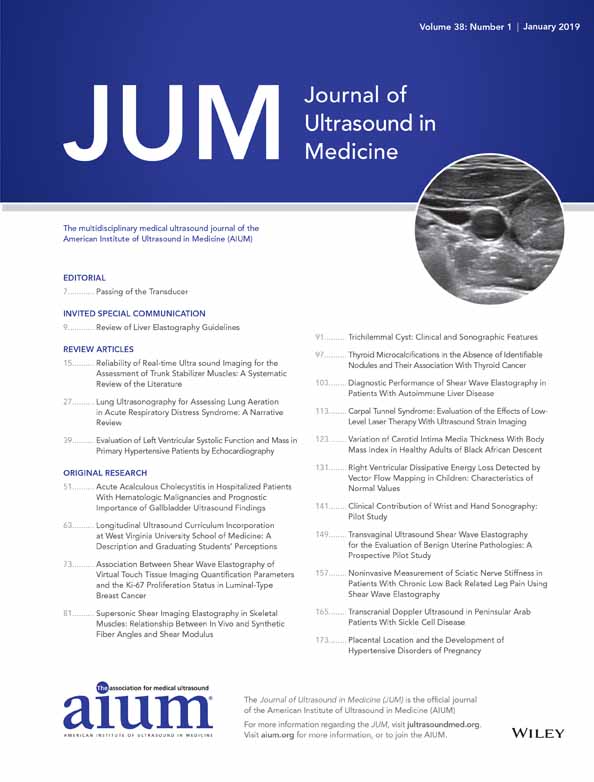Transvaginal Ultrasound Shear Wave Elastography for the Evaluation of Benign Uterine Pathologies: A Prospective Pilot Study
This study was completed with financial support from the Association of University Radiologists and General Electric through the AUR-GERRAF fellowship program (K.E.M.). The authors gratefully acknowledge the efforts of research team members James Pool, LaDonna Austin, and Tamara Harper, and ultrasound technologist Annica Johnson.
Abstract
Objectives
This study evaluated the diagnostic performance of transvaginal ultrasound (TVUS) shear wave elastography (SWE) for evaluating uterine adenomyosis and leiomyomas.
Methods
Institutional Review Board approval was obtained for prospective enrollment of 34 premenopausal women with pelvic pain and/or bleeding between January 2015 and June 2016. TVUS SWE was performed with regions of interest in multiple uterine segments and shear wave velocities(SWVs) were recorded. Reference pelvic magnetic resonance examinations were performed and reviewed without access to the ultrasound results.
Results
Continuous variables were analyzed using means, t tests, and analysis of variance. Magnetic resonance imaging revealed adenomyosis in 6 women (12 uterine segments) and leiomyomas in 12 women (28 segments). On a per-patient basis, mean SWV in 16 women with no adenomyosis or leiomyoma was 4.3 ± 1.7 m/s, compared with 5.7 ± 2.3 m/s in 18 women with a magnetic resonance diagnosis of myometrial pathology (P < .0002; 95% confidence interval, −2.2, −0.6). On a per-segment basis, SWV in normal myometrium was 4.8 ± 1.9 m/s, compared with 4.9 ± 2.5 m/s in adenomyosis and 5.6 ± 2.5 m/s in leiomyoma (P = .34 by one-way analysis of variance). In pairwise comparison, SWV for adenomyosis and leiomyoma did not differ significantly (P = .40).
Conclusions
TVUS SWE did not distinguish adenomyosis from leiomyoma. However, our pilot study demonstrated that myometrial SWVs were higher in uteri with adenomyosis and leiomyomas than in uteri with myometrium with no abnormalities suggesting a potential role for SWE in treatment response assessment.




